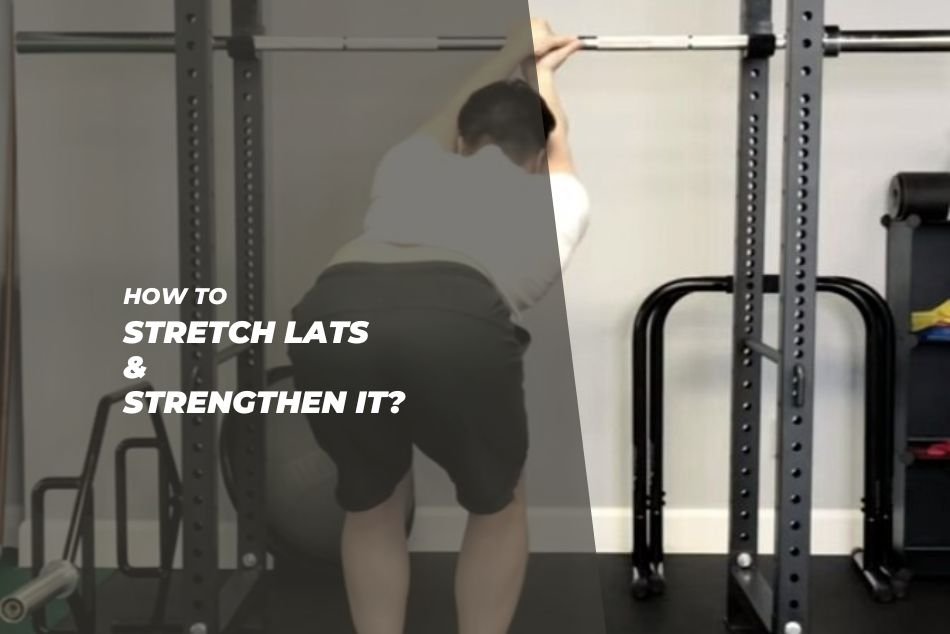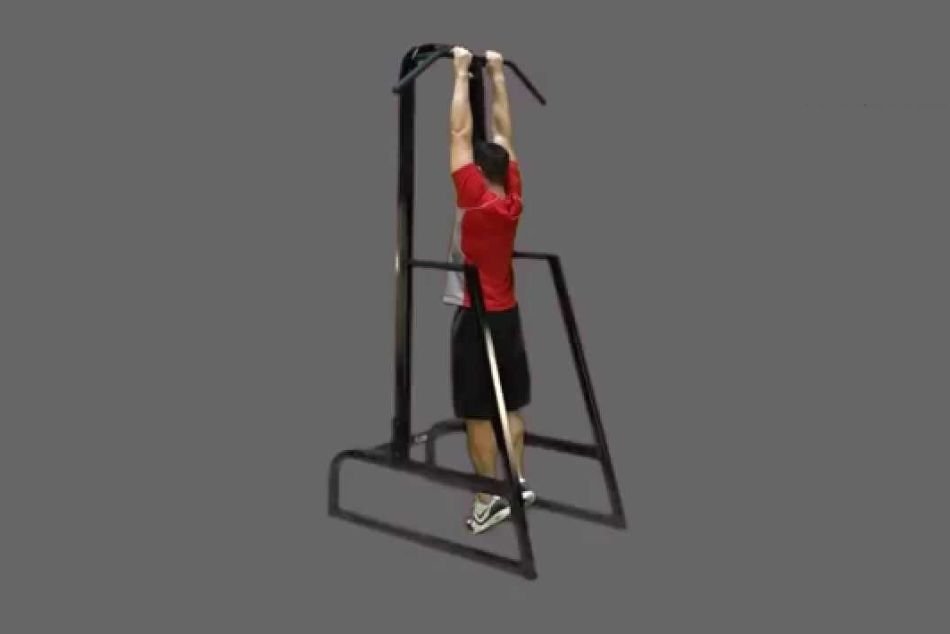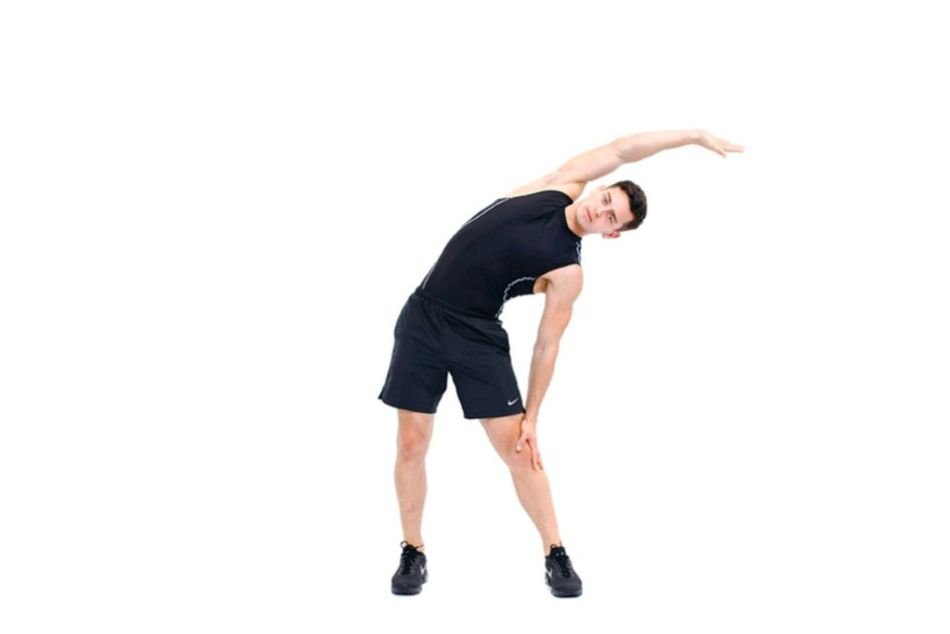Know How to Stretch Lats Properly to Strengthen, Gain Flexibility, and Prevent Injuries
The latissimus dorsi muscles, also called lats, are one of the largest V-shaped muscles that connect with your vertebral column and give that V-tapered, well-sculpted back that every muscular guy loves to have. No doubt, training is essential, but it’s equally important to know that it can cause tension and tightness in the muscles. Similarly, many struggle with tight and sore lats from an intense workout routine or due to limited overhead shoulder mobility. Hence, it’s essential that you should know how to stretch lats to gain flexibility while strengthening and avoiding any injuries.

In this article, we’ll discuss some of the best lat stretches that you can do to overcome lat tightness issues and maintain your upper body stability and mobility.
7 Best Lat Stretches Everyone Should Do
Don’t know how to stretch lats correctly and are not aware of different ways you do it? Here below are some of the best lat stretches you can do.
1) Active Floor Stretch
- Go into a kneeling position, sink your hips towards the back, and place your right forearm on the floor.
- Lean your body weight towards your right arm and, stretch your left arm, and try to reach to your fingertips. You’ll get the stretch to the side of your torso.
- Stay in that position for a few seconds.
- Lastly, get back to the starting position.
- Repeat it ten times. Similarly, repeat on the opposite side as well.

Img Src: https://media.post.rvohealth.io/wp-content/uploads/2019/06/Active-floor-stretch.gif
To maximize stretch, you can round your lower back. And, for deepening it, you can even rotate your chest and ribs to the ceiling as you continue stretching.
2) Foam Rolling
The foam roller is one of the good ways to relieve your soreness while increasing range and correcting misalignments that occur due to muscle knots and tightness.
Get a foam roller and pay extra attention to using it on any tight, sensitive, or tender muscle area that you notice. Similarly, engage your opposite arms and lower legs to make sure you’re not putting more than the required pressure on your lats.

- Lie and adjust your right side of the lat on the foam roller while maintaining a neutral spine position.
- Comfortably keep your right leg in a straight position and your left knee slightly bent.
- Now, roll back & forth through the lower back up till underarm while moving as slowly as you can.
- Roll from one side to another.
- Keep doing it for 1 minute, and after that, repeat on the other side.
3) Unilateral Lat Stretch Using Fixed Bar
Unilateral Lat stretch is one of the best ways to stretch your lats. It fully lengthens and loosens your entire upper back region. For performing effectively, it’s recommended that you breathe deeply when you’re stretching your lats as it enforces your tight lats to get more relaxed.

- Find an immovable bar that is firmly planted.
- Grab that bar from one hand.
- Slightly bend your knees to 90 degrees and sink into a squat position. Now, place your next hand on your knee. And start stretching while applying pressure to the hand that you’ve used for holding the bar. Hence, you’ll feel a deeper level of stretch on your lats.
- Hold the bar straight with your arm and retract the shoulder blade in a way that you’re trying to pull the bar without moving the arm.
- Similarly, try to give more pressure by stretching and sinking into the squat position while keeping your hand on the knees at the same time.
- Those who do it correctly will feel a deep stretch on the side of the lats through which they pull the bar.
Note:
Stretch and hold for 30 seconds to 1 minute, and then switch your arm and hold it for the same time. Repeat it for 2 to 3 times, and try to deepen your stretch every time.
4) Hanging Lat Stretch
It’s a slightly more advanced stretch, which also involves your latissimus dorsi more intensely. Similarly, it also proves beneficial in correcting posture, improving shoulder mobility, and strengthening your grip power.

- In an overhand grip, put your hands on a bar.
- Make sure your feet are not touching the ground.
- Relax your shoulder and lat muscles. Your ears should stay close to the shoulders at the time of stretching.
- Breathe deeply and stay in a hanged position.
Note:
Hold for 30 seconds to 1 minute. Take a break and then repeat it. Go for anywhere between 2 to 3 sets.
5) 1 Arm Hanging Lat Stretch
It’s an advancement of hanging lat stretch. You do this lat stretch with one hand. Hence, it’s recommended to do it only if you’re comfortable with it. For instance, you can start hanging for 30 seconds and can go for around a minute when you start getting comfortable with it.

- In an overhand grip, place both your hands on a bar.
- Keep your feet slightly above the ground.
- Once you’re in the hanging position, slowly remove one of your hands from the bar and place it down at your side.
- Keep your shoulder and lat muscles relaxed, and if you think you need balance for holding, you can adjust by hanging your arm. It’s a beneficial stretch for stability, especially as you start progressing.
- Breathe deeply and hang for between 30 seconds to 1 minute, and then switch to another side.
6) Bench Kneeling Lat Stretch
A gym bench is the best option. However, for those who work out at home or want to try it at home, for them chair is good to go. Similarly, if you’re not on a smooth floor, then you can lay a towel or mat to get comfortable on your knees.

- Start by kneeling on the floor with your hips and knees hip-width apart. Place the bench in front of you, ensuring it’s far enough for your arms to extend fully.
- Bend from your hips and gradually lean forward, maintaining a straight spine and engaging your abdominal muscles.
- Put your hands on the bench, keeping your arms straight and elbows extended. Your arms should form a straight line from the shoulders as you lean forward.
- Lean back at the hips with your knees under your hips. Keep your hands on the bench with palms facing down.
- The more you lean back into your hips, the greater the stretch you’ll feel in your upper back. Ensure your chin is tucked into your neck for stability in your cervical spine.
Note:
Stay in this position for 30 seconds to 1 minute and repeat it two to three times. Try to lean backward into the hips every time, as it’ll make your stretch more effective.
7) Standing Lateral Stretch
It doesn’t need any equipment. You can do wherever you want. Further, this standing lateral stretch is one of the best stretches that proves beneficial to improve flexibility as well as mobility.

- Stand upright with your feet shoulder-width apart. Ensure your knees are slightly bent and not locked.
- Put your right hand on the hip and the other behind your head, making sure your elbow is beside your head.
- While keeping the hand on the head, slowly lift your arm so your elbow starts pointing upward. You should feel a stretch along your side.
- Stay in the position for 30 seconds to 1 minute, then return to the starting position.
- Switch to another side and repeat the movement.
Closing Thoughts
Lifters often face issues of tight lats, and it can start interfering with your lifting and, at worst, even basic movements. Hence, it’s recommended, and even beneficial, to stretch your lats on a regular basis like other body parts before you start your workout to minimize the problem of tight lats.
Nonetheless, if you’ve questions like how to stretch lats in a proper way, then here we’ve covered seven basic lat stretching movements that you can go through. We assure you it’ll loosen your tight lats and will also give stability and mobility to your upper body as well.






